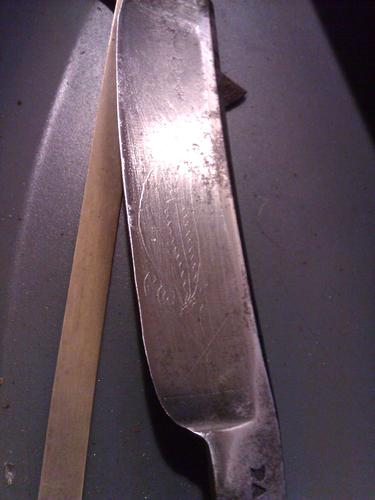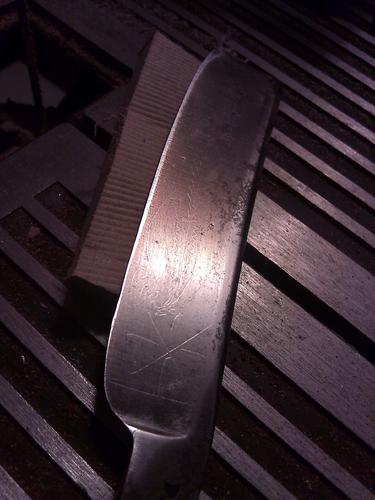Results 1 to 4 of 4
Thread: Packwood engraving
-
11-20-2013, 12:28 PM #1
 Packwood engraving
Packwood engraving
I'm having a Packwood razor restored and the restorer noticed an etching on the blade which he has identified as potentially "a thistle and a cross". I am wondering if 1) anyone has seen anything like this, 2) if so, what it might signify (above and beyond a previous owner's affectation).
thanks


-
11-20-2013, 05:27 PM #2Senior Member



- Join Date
- Apr 2008
- Location
- Essex, UK
- Posts
- 3,816
Thanked: 3164
Can't quite make out the thistle - at least, its not like any thistle I have seen, but can see the star or asterisk shape clearly.
Both look inexpertly scrawled on, so they mean something to whoever defaced the blade, I suppose!
Regards,
Neil
-
The Following User Says Thank You to Neil Miller For This Useful Post:
Peter57 (11-20-2013)
-
11-20-2013, 06:09 PM #3

 The Order of the Thistle represents the highest honour in Scotland. It is second only in precedence in the UK to the Order of the Garter. My uneducated guess is that this was done by a member of the Royal Family who may have had developmental problems and was sent to America so as not to bring excessive shame on The Family. And in the halfwits defense, a Thistle and Cross are not that easy to draw.
"Call me Ishmael"
The Order of the Thistle represents the highest honour in Scotland. It is second only in precedence in the UK to the Order of the Garter. My uneducated guess is that this was done by a member of the Royal Family who may have had developmental problems and was sent to America so as not to bring excessive shame on The Family. And in the halfwits defense, a Thistle and Cross are not that easy to draw.
"Call me Ishmael"
CUTS LANE WOOL HAIR LIKE A Saus-AGE!
-
The Following User Says Thank You to WW243 For This Useful Post:
Peter57 (11-20-2013)
-
11-20-2013, 06:21 PM #4

My guess would be just a natural inspired design. It's an acid etch (you can see the vertical line from where the resist ended), and many etchings from that period are rather crude and simple, often geometric or naturalistic patterns. See page 263 Antiques - Google Books for an example of early etching.
-
The Following User Says Thank You to ScienceGuy For This Useful Post:
Peter57 (11-20-2013)


 LinkBack URL
LinkBack URL About LinkBacks
About LinkBacks






 Reply With Quote
Reply With Quote
